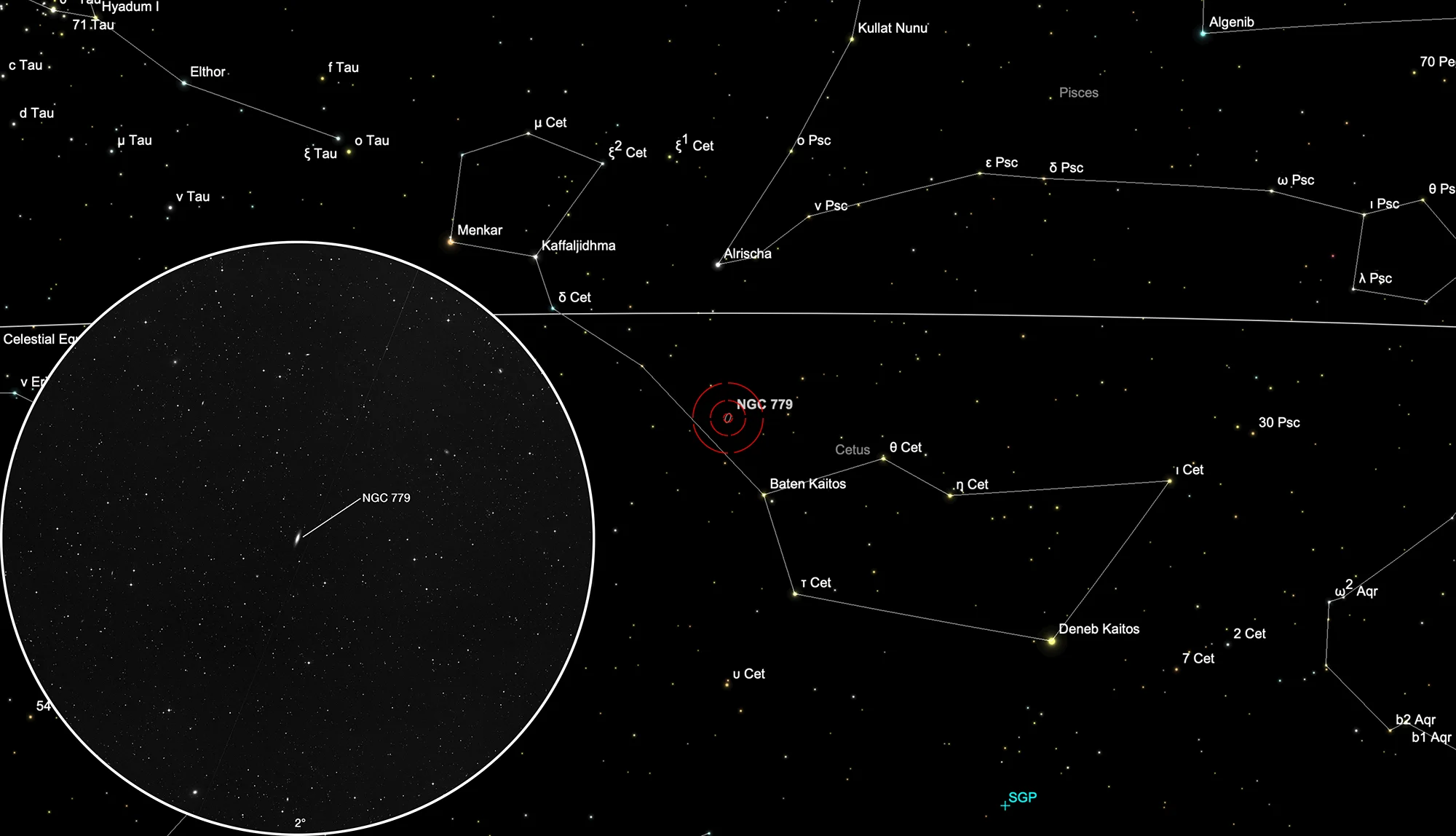Galaxy NGC 779
History
The galaxy NGC 779 was discovered on 10 September 1785 by the German-British astronomer William Herschel with his 18.7 inch reflector telescope. He listed it as «bright nebula» I 101 and the notes: «Considerably bright, pretty large, extended, nearly in the direction of the meridian, much brighter in the middle, 5' long.» [464]
Physical Properties
| Designation | NGC 779 |
| Type | Gx (SBb) |
| Right Ascension (J2000.0) | 01h 59m 42.6s |
| Declination (J2000.0) | -05° 57' 51" |
| Diameter | 4.1 × 1.2 arcmin |
| Photographic (blue) magnitude | 12.0 mag |
| Visual magnitude | 11.2 mag |
| Surface brightness | 12.7 mag·arcmin-2 |
| Position Angle | 160° |
| Redshift (z) | 0.004543 |
| Distance derived from z | 19.19 Mpc |
| Dreyer Description | cB, L, mE 162°, mbM |
| Identification, Remarks | WH I 101; h 183; GC 470; MCG -1-6-16; IRAS 01571-0612 |
Finder Chart
The galaxy NGC 779 is located in the constellation Cetus. On 26 October it is in opposition to the Sun and crosses the meridian at local midnight. Visible from your location in the months: June to March.
